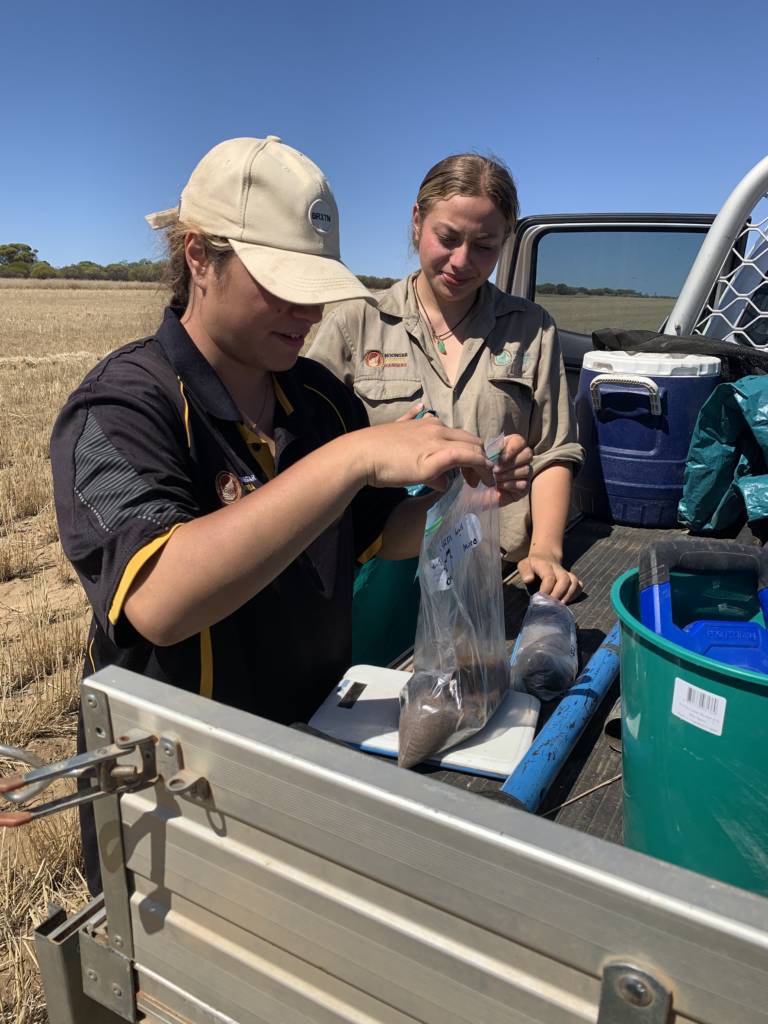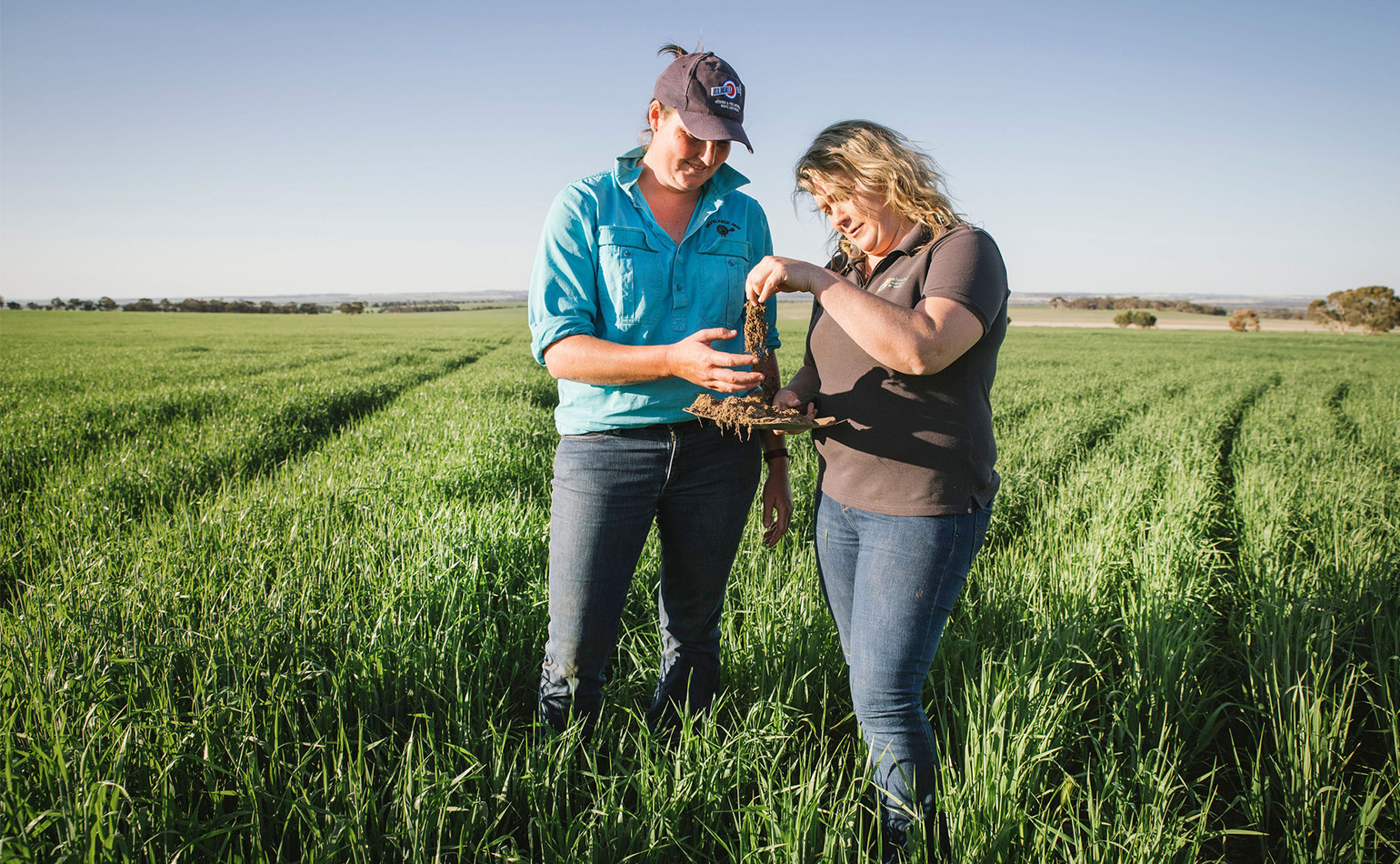Soil CRC Communications Manager Katherine Seddon sat down for a chat with Wheatbelt NRM Program Manager Felicity Gilbert.
Tell us about Wheatbelt NRM
Wheatbelt NRM began life as the Avon Catchment Council, and we’ve been operating in the wheatbelt region of southern Western Australia for around for 20 years. Our membership of 2,500 individuals is quite mixed. It includes farmers along with other landholders in the region who are interested in land care.
There are three major streams that make up Wheatbelt NRM: the Healthy Environments team which is about protecting and managing Wheatbelt biodivesity; the Sustainable Agriculture team which promotes sustainable farming for the future; and our Aboriginal Advisory Group and Noongar Boodjar Ranger Program which conducts seed collecting and provides other services to provide on-country experience for indigenous rangers.

What area and type of farming do you cover?
We cover an area of 12 million hectares of farming land. It is mostly used for cropping, although there are some mixed enterprises, predominantly with sheep. There are a range of crops grown – canola, wheat, barley, lupins and oats – mostly for the export market. Much of our wheat is exported to Asia to produce noodles. Some of the mixed farming enterprises have feedlot cattle, as it is more viable to bring the cattle to the grain rather than moving the grain south.
How have the recent fires in the area impacted your members?
The fires have been devastating. We’ve seen decades of land revegetation just burn to the ground. There has been so much loss of groundcover. Farmers who have worked incredibly hard to retain stubble and care for their soil are now facing bare earth, which is very vulnerable to erosion if we get any winds or rain.
We have joined the emergency response committee headed up by Soil CRC partners Corrigin Farm Improvement Group who are at the frontline of the disaster. We need to get plants back into ground and get seeds sown. It is not only vital for the soil, but also for the mental health of farmers. Seeing regrowth and renewal is healing for the land and the mind. But we are coming up against difficulties in supply of seedlings because of covid supply chain issues, and also because of the increased demand from the increase in carbon markets. Our goal is to help farmers get their ground covered, restore their native vegetation and protect their assets.
What type of soil do you have?
The soils of the wheatbelt are ancient and weathered. We have just about every soil constraint known to man (or woman)! There are sandy soils that are low in nutrient density and carbon levels. There is salinity, compaction, even waterlogging. You name it, we have it!
In our north east region, we are seeing significant climate change impacts. The growing season is shortening, there is more summer rain, which is coming when farmers can’t use it and not falling when famers need it. We are working with farmers in that area on modelling for climate change. It is anticipated that parts of the region that have always been used for cropping will become unusable for cropping in the future and a new income stream will need to be found.
Why is soil important to your members?
There is a strong recognition that farming is all about your soils, especially in cropping, but there is an is increasing focus on soil in grazing too. Healthy soils are more productive which means more productive crops and pastures.
Why did Wheatbelt NRM become a participant in the Soil CRC?
Innovation in soil health is the heart of what we are about. Anything that can improve the health of our ancient and weathered soils is valuable.
What is exciting about working with the Soil CRC?
It’s a wonderful opportunity to contribute at both a local and a national level on projects. Its’ great to work on Western Australian specific projects but also to see the similarities there are across Australia, especially in South Australia.
Our involvement in the Soil CRC has led to better collaboration and partnerships within Western Australia. This is evidenced by the recent funding that Soil CRC participants Murdoch University, Facey Group and Corrigin Farm Improvement Group received from the Western Australian Government for a carbon farming project. To a great extent, those connections have been forged through Soil CRC.
The relationship with the Soil CRC has broadened our networks in the eastern states. There is a much greater access to expertise across the country.
Finally, Wheatbelt NRM, like the Soil CRC and countless others have postponed their upcoming conference, when will we see Talkin’ Soil Health back?
We had to postpone our Talkin’ Soil Health Conference to March next year. We know that it is the networking and connecting in person that makes the conference really valuable. We wanted to provide the real connections and conversations that can only occur in person. So, we are looking forward to gathering in person next year 23 – 24 March 2023. For this year, we are also holding a one-day event on 31 March 2022, with two workshops about harnessing natural capital for sustainable farming futures.

